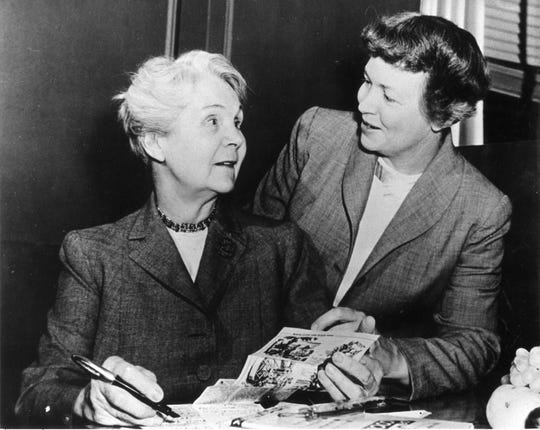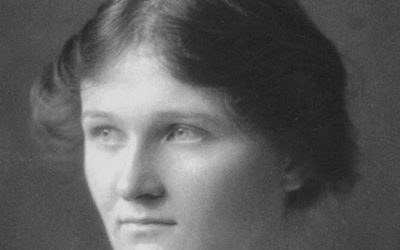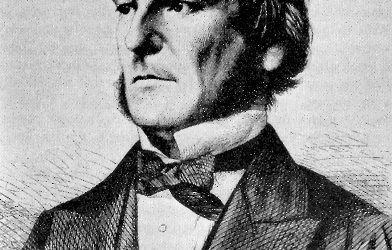If we were to compare our own lives with the lives of people who lived at the turn of the last century in the United States, the first things that would come to our attention would be the many differences that separate us from them. Our early 20th-century counterparts wore different clothes, ate different food, listened to different music and even spoke quite differently from us. On the other hand, if we were inclined to dig a little deeper, we would also discover a strong resemblance to life as we know it. Middle-class citizens of that time had office jobs in the city, long commutes to work, trips to the movie theater, picnic excursions on the weekend, and many other experiences that would be familiar to us.
Go even deeper than this, however, to the most basic conditions of society, and we again find differences, differences that are much more fundamental than the clothes we wear or the food we eat. One of the most striking of these is the presence of domestic service as an institution. It was not at all unusual for a middle-class bachelor of the 1910s to employ a cook to make his meals for him, and when he married and had children his household would generally include numerous other servants to do a wide range of daily chores. Today, primarily because of improvements in the average standard of living, only the wealthiest members of society employ personal servants, and the services once performed by them are now generally done either by the families themselves or outside the home by professionals.
For several decades, however, there was an awkward period of transition during which many found themselves struggling to do the things which they had grown up expecting that someone else would do. One of the most taxing, since it had to be done three times a day and often for a demanding “client”, was cooking. Domestic appliances were of some help, but what the housewives of the early 20th century really needed was good advice and moral support. They found both in one of the best-selling cookbooks in the history of the world, The Joy of Cooking, a work which is all the more remarkable because its author, Irma S. Rombauer, had no formal training in the culinary arts; in fact, according to most of her close friends, she wasn’t even a particularly good cook!
Rombauer was born Irma von Starkloff on October 30, 1877 in St. Louis, Missouri. The daughter of a prosperous doctor, she grew up in affluent surroundings and was introduced to high society at a young age. Although she showed an interest in the fine arts, with a few art courses at Washington University constituting her entire university education, her real passion appears to have been entertaining and acting as a hostess. In 1899 she married Edgar Rombauer, a prominent local attorney, and for the next three decades she spent much of her time planning events for their friends and business associates.
Edgar was a successful and hard-working man who shared many interests with Irma, even teaching her how to cook early in their marriage; unfortunately, he also had a very sensitive and melancholic disposition that occasionally turned self-destructive. Professional frustrations and personal concerns caused him to experience many episodes of severe depression, including one which occurred only a few years after they married, in 1902. This came to a head in the fall of 1929, when he suffered a complete nervous breakdown. Although the rest of the family believed that he had recovered from this attack of nerves a few months later, he was still deeply troubled, and on February 3, 1930, while alone in the house, he took his own life by shooting himself in the head.
Rombauer was devastated by this loss, and she found herself at both an emotional and a financial loose end. The ravages of the Great Depression had wiped out most of her savings, and with an unemployment rate of almost 9% (and steadily growing higher by the day) this was not an easy time for anyone to get a job, let alone a middle-aged woman who had never been in the workforce before. Her two children were already grown up, with one living hundreds of miles away and the other planning to move after an upcoming marriage. For the most part she was on her own, with no obvious way out of her predicament. So instead she hit upon a way that was not so obvious: writing a cookbook.
This came as a surprise to most of her friends and family. Rombauer had never been known for the quality of her cooking. Her success in hosting parties had mostly been due to her personal charm and talent for making conversation. Cookbooks at this time were generally seen as manuals for making the best meals possible; how could a person who barely knew how to cook make a great cookbook?
Her solution was to change the idea of what a cookbook was for. Rombauer’s new book was to be informal and relatable, not stuffy and didactic as previous cookbooks had been. Instead of treating the reader as a student to be instructed, she spoke on the same level as her audience, sharing personal anecdotes and humor along with the recipes. Throughout the book she adopted a lighthearted tone, treating cooking as a hobby, not as tiresome drudgery that has to be endured for the sake of the finished product. This new approach was reflected in her book’s title, The Joy of Cooking: a Compilation of Reliable Recipes with a Casual Culinary Chat.
Rombauer privately published the original Joy of Cooking with the last of her savings, and she and her daughter personally sold the initial run of 3,000 copies, first to their acquaintances and then through small bookstores and gift shops in the St. Louis area. By the summer of 1932 it had become a modest success, encouraging her to seek a publisher for a new, expanded edition. In 1935 her manuscript was finally accepted by the Bobbs-Merrill Company of Indianapolis, which had never published a cookbook before. Rombauer and Bobbs-Merrill had a tempestuous partnership, with the publisher initially wanting to cut out her anecdotes even though they were the main selling point of the book; however, they did promote the book heavily, and it soon grew into a bestseller.
For many decades The Joy of Cooking was a staple of American culture, popular as a wedding gift because it did such a good job of explaining cooking to people with little experience or skill. Thanks to numerous updates by Rombauer, and later by her daughter Marion, it was able to keep up with new cooking trends while retaining the affable charm that was its claim to fame. In modern times it has arguably been superseded, first by cooking magazines and then by recipes shared on the Internet, but take a look at the style in which many of those recipes are written and you’ll note an obvious debt to the legacy of Rombauer’s original cookbook.
Irma Rombauer’s great contribution to the art of cooking was to make it about more than just the food. She recognized that any activity which takes up such a large part of a person’s day ought to be enjoyable as well as productive, a social activity and not a tedious chore. For centuries cookbooks had been primarily focused on the pleasure of the eater, practically ignoring the cook’s needs. But in the modern world of self-service, the cooks often are the eaters, so they want to enjoy themselves in both capacities. And thanks in part to books like The Joy of Cooking, they can.
Next Post: George Boole, the self-taught mathematician whose pioneering work in applied logic, the famous “Boolean algebra”, paved the way for modern computer coding.














